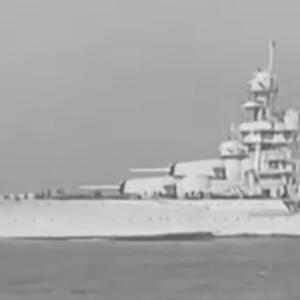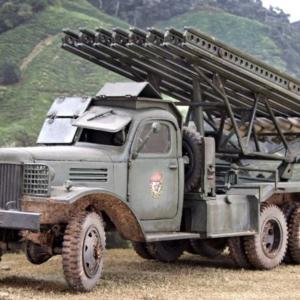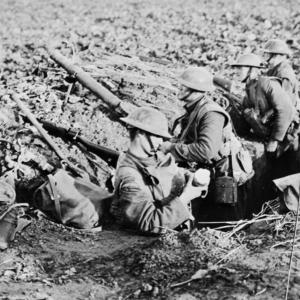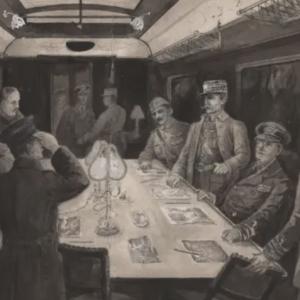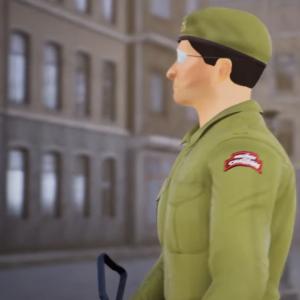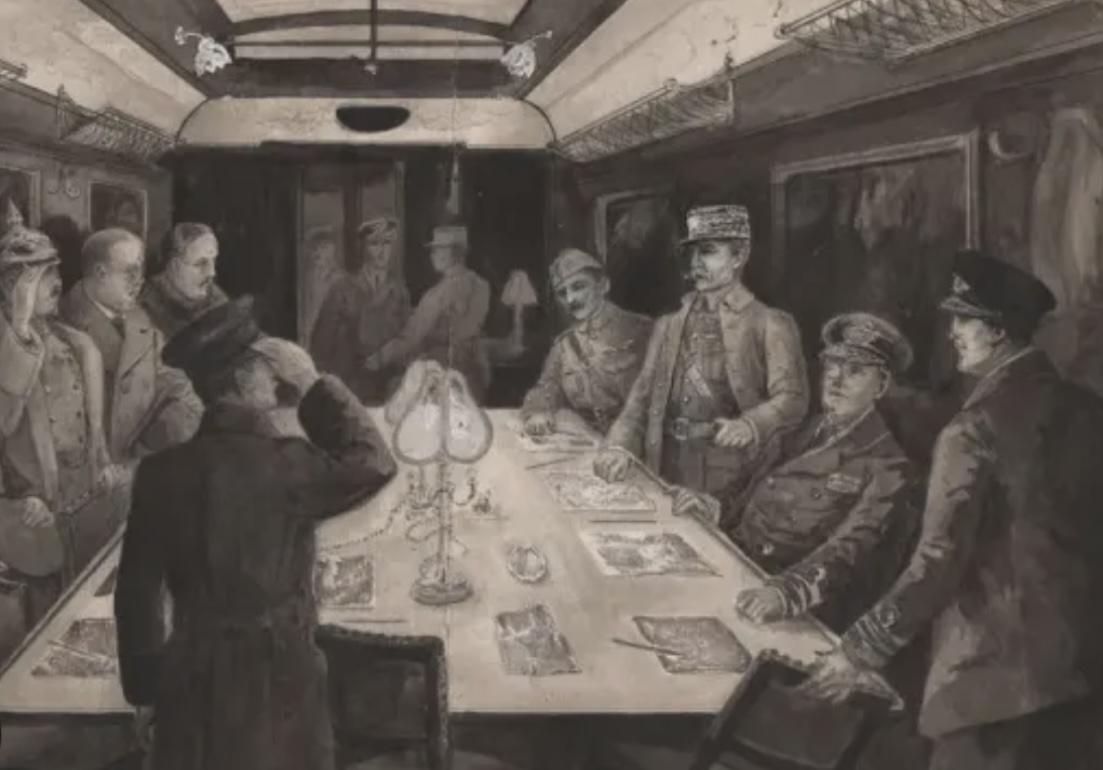
On this day in military history…
The armistice that ended the fighting in the First World War was signed on 11 November 1918 at five o’clock in the morning. It took place deep inside the Forest of Compiègne in northern France, not in a conventional building but in a railway carriage belonging to Marshal Ferdinand Foch, supreme commander of the Allied armies. The location was chosen for privacy and security, away from populated areas and any possible attack. The armistice was to take effect exactly six hours later, at eleven o’clock in the morning, which is why the war is often said to have ended on the eleventh hour of the eleventh day of the eleventh month.
Representing the Allies was Marshal Foch, assisted by British First Sea Lord Admiral Sir Rosslyn Wemyss, along with French general Maxime Weygand. The Allied delegation did not include American or Italian heads of state, although the United States was formally represented within the Allied command. On behalf of Germany came Matthias Erzberger, a civilian politician from the Centre Party, chosen precisely because he was not a member of the military high command. He was accompanied by General Detlof von Winterfeldt, Count Alfred von Oberndorff from the Foreign Ministry, and Captain Ernst Vanselow of the German Navy. The German delegates had been instructed to secure peace quickly because their government and military situation was collapsing at home. Although the Kaiser had not yet officially abdicated, mutiny and revolution were already spreading across Germany, making a continuation of the war impossible.
The German delegation was not permitted to negotiate the terms. They were presented with a document written entirely by the Allies which they were expected to accept or reject in full. The terms were deliberately severe. Germany was required to evacuate all occupied territories in Belgium, France, and Luxembourg within fourteen days. German troops also had to withdraw completely from the west bank of the Rhine, leaving it and a fifty-kilometre strip beyond it under Allied occupation. The Allies demanded the surrender of 5,000 artillery pieces, 25,000 machine guns, 1,700 combat aircraft, and the bulk of Germany’s naval fleet, including six battlecruisers, ten battleships, eight light cruisers and fifty destroyers. Submarine warfare was to end immediately, with all U-boats surrendered to the Allies. All prisoners of war and interned civilians held by Germany were to be released at once, although the Allies reserved the right to continue holding captured Germans until a final peace treaty was agreed. Germany was also required to renounce the Treaty of Brest-Litovsk it had imposed on Russia earlier in the war, effectively opening the way for the Allies to move into eastern Europe if necessary.
The armistice did not formally end the state of war; it merely suspended fighting until a final peace settlement could be reached. But for the millions who had endured four years of battles, it meant the guns finally fell silent. In the hours before eleven, neither side wished to be caught advancing once the deadline passed, so the last hours were chaotic and tragic but ultimately finite. When the clock struck eleven, church bells rang out across Europe. Although the official peace treaty, the Treaty of Versailles, would not be signed until 28 June 1919, the armistice of 11 November 1918 remains the moment identified with the end of the First World War.

